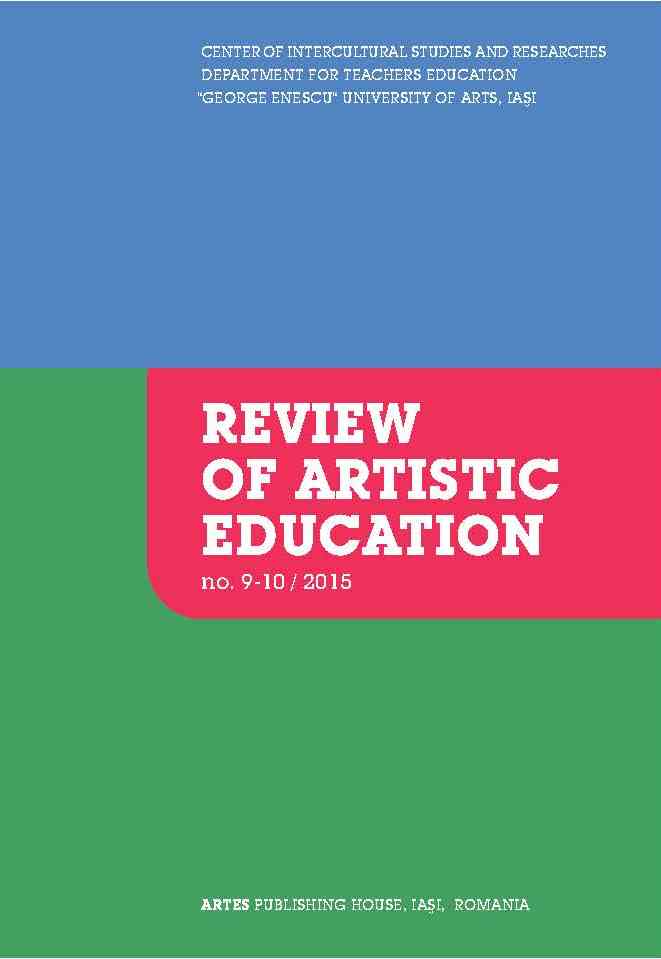PEDAGOGICAL IMPLICATIONS IN APPROACHING MUSIC
PEDAGOGICAL IMPLICATIONS IN APPROACHING MUSIC
Author(s): Loredana Viorica IațeșenSubject(s): Music
Published by: Editura ARTES
Keywords: musicology; music criticism; music journalism; history; style; genre
Summary/Abstract: Inaugurated as early as the 18th century (more precisely in 1722), with the birth ofthe journal entitled Critica musica - an important daily newspaper in which various composers of that time commented on their own creations - and continued by the attitude remarks and ideas on the validity of the value judgment of Romantic creators like Robert Schumann, Hector Berlioz, Franz Liszt, Richard Wagner, etc., music criticism developed in the 20th century as a branch of musicology. Being a form of pondering on the complexity ofthe sound phenomenon considered in its three-fold structure – creation-performance-reception – music criticism becomes a valid field when it begins to be practiced in the written press or in all the other media channels, by professional musicians in the true meaning of the word, with solid general-cultural and musicological training, capable of uttering well-substantiated opinions on the meaning or style of a piece of music in first audition, of apprising and judging the performance of an opus in a particular interpretative variant, and of contributing to the education of the audience and to the training of musical tastes in a coherent and responsible manner. Numerous comments, which appeared in English lexicographic volumes (Encyclopedia Britannica, The New Grove Dictionary of Music and Musicians), in various papers in French encyclopedias (Musiques Une Encyclopédie pour le XXI siècle coordinated by J.J. Nattiez, in Paul Griffiths’ work entitled Objectifs et impacts de la critique musicale) or in Romanian references (Muzicologia şi Jurnalismul. Muzica clasică în media românescă de după 1989 coordinated by Prof. Dr. Laura Vasiliu) and more, increasingly contributed to the individual development of this fascinating field. The purpose of our paper is not to achieve an actual history of music criticism, which would only be possible further to thorough research. Relying on the synthesis of relevant chronological and stylistic information related to the object of our research, we will attempt, by the transposition of this phenomenon in the teaching world, to prove the possible evolution of music criticism genres in a natural sequence and relation, from presentation – annotation – essay – review, to interview – opinion piece – column – portrait. In our opinion, this sequence contributes to their clarification, meaning that they may be immediately and professionally applied in music journalism.
Journal: Review of Artistic Education
- Issue Year: 2015
- Issue No: 09+10
- Page Range: 106-113
- Page Count: 8
- Content File-PDF

